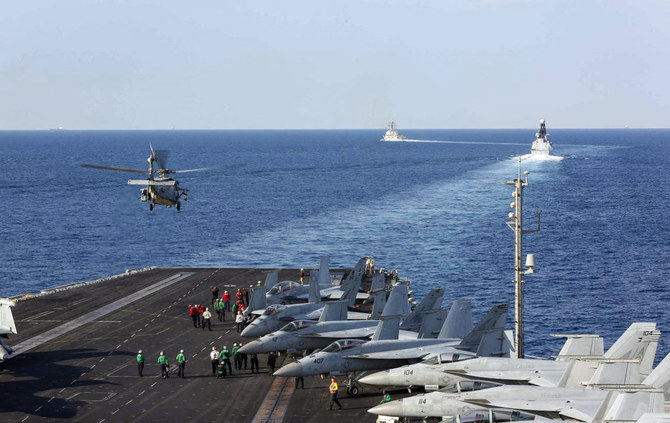U.S. Defense Secretary Lloyd Austin has ordered the rapid deployment of key naval assets to the Middle East, reflecting heightened concerns in the region.
The Pentagon announced on Sunday, August 11, 2024, that a guided missile submarine has been directed to the area, while the USS Abraham Lincoln aircraft carrier strike group has been instructed to expedite its transit.

These deployment orders come at a critical juncture as the United States and its allies intensify efforts to broker a cease-fire agreement between Israel and Hamas.
The urgency of these diplomatic endeavors has been amplified by recent events that have sent shockwaves through the region, including the assassination of Hamas political leader Ismail Haniyeh in Tehran and the killing of a senior Hezbollah commander in Beirut.
These high-profile assassinations have raised fears of potential retaliatory strikes by both Iran and Hezbollah, prompting the U.S. to reinforce its military presence in the area.

The Pentagon has not disclosed the specific timeline for the submarine’s arrival in the Middle East.
The USS Abraham Lincoln, previously stationed in the Asia Pacific, was already slated to replace the USS Theodore Roosevelt in the region. Secretary Austin’s latest order aims to accelerate this transition, though specific details on the new arrival timeframe remain undisclosed.
The Lincoln carries a formidable air wing, including advanced F-35 fighter jets and the versatile F/A-18 fighter aircraft.
Maj. Gen. Pat Ryder, Pentagon press secretary, revealed that Secretary Austin held a crucial conversation with Israeli Defense Minister Yoav Gallant.
During this call, Austin reaffirmed the United States’ unwavering commitment to Israel’s defense, highlighting the recent bolstering of U.S. military capabilities throughout the Middle East in response to escalating regional tensions.

The discussion also touched upon Israel’s ongoing military operations in Gaza, with emphasis placed on the critical importance of minimizing civilian casualties.
This military repositioning occurs against the backdrop of continued violence in the Israel-Hamas conflict. Just a day before the announcement, an Israeli airstrike on a school-turned-shelter in Gaza resulted in at least 80 fatalities and nearly 50 injuries, according to Palestinian health authorities. This incident marks one of the deadliest attacks in the 10-month-long war.
As the Pentagon swiftly adjusts its military posture in the Middle East, the international community watches closely.
The deployment of these significant naval assets not only demonstrates the United States’ commitment to regional stability but also underscores the volatile nature of the current geopolitical landscape in the Middle East.
The coming days and weeks will be crucial in determining whether these moves will contribute to de-escalation or potentially lead to further complications in an already tense region.



